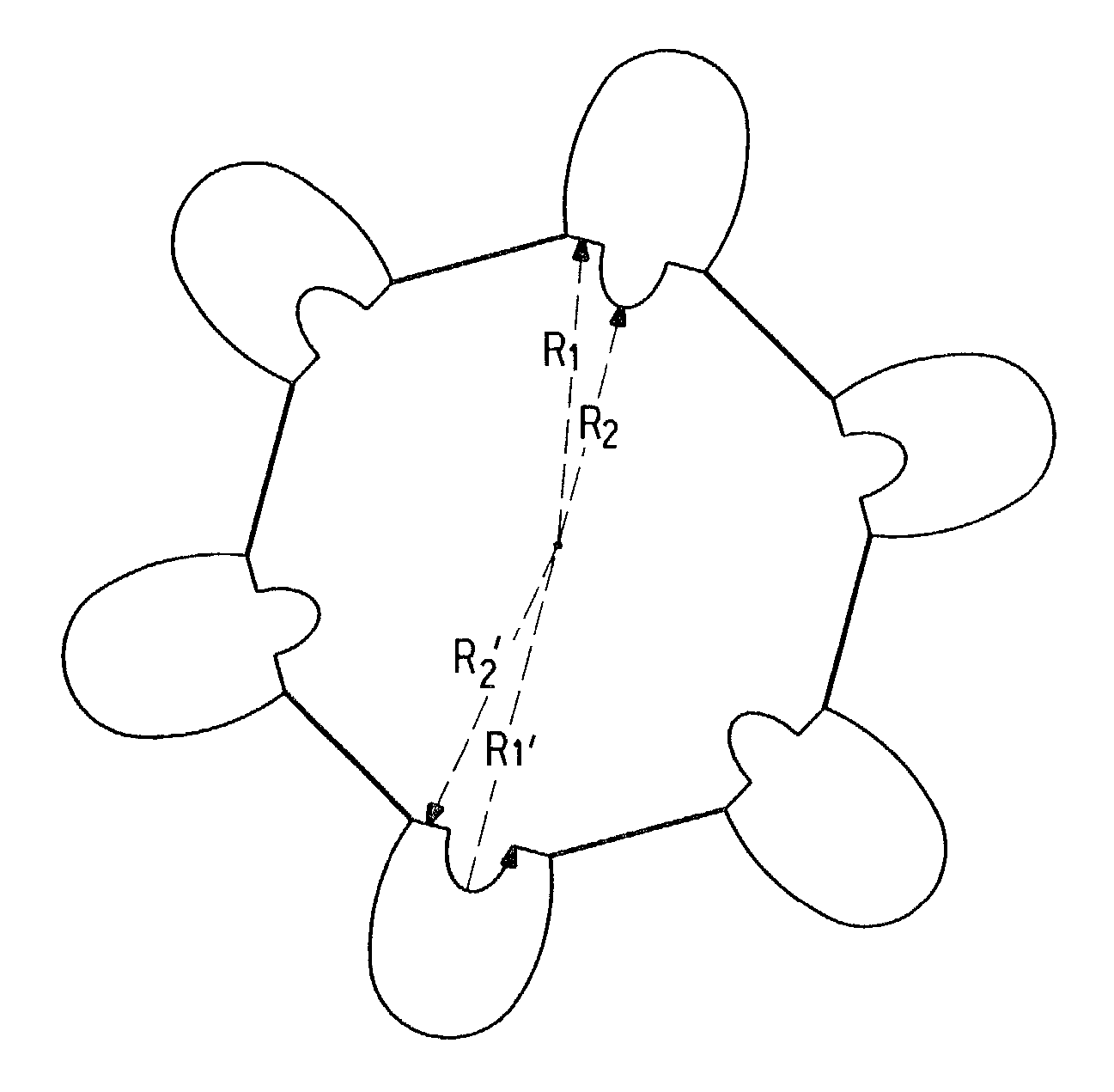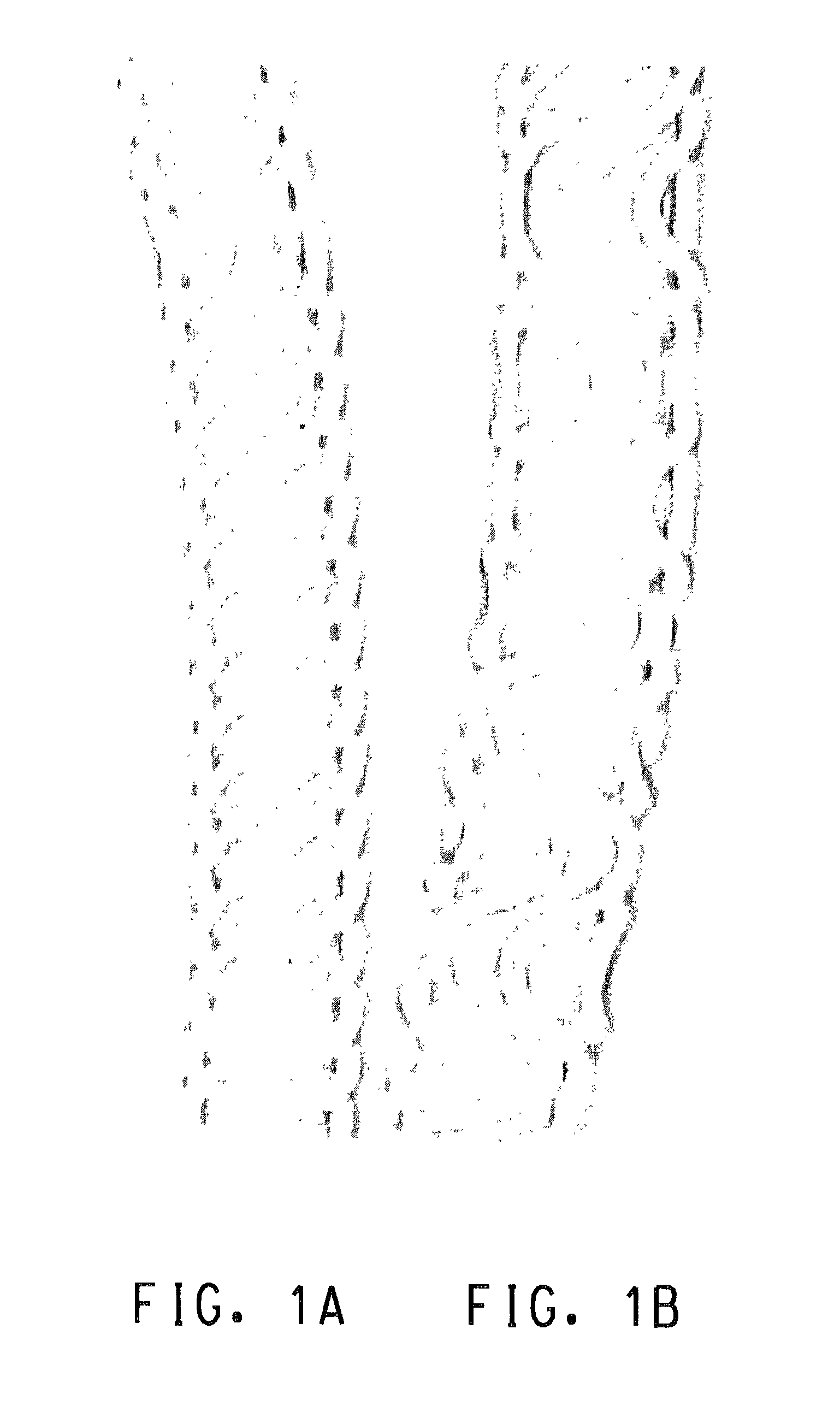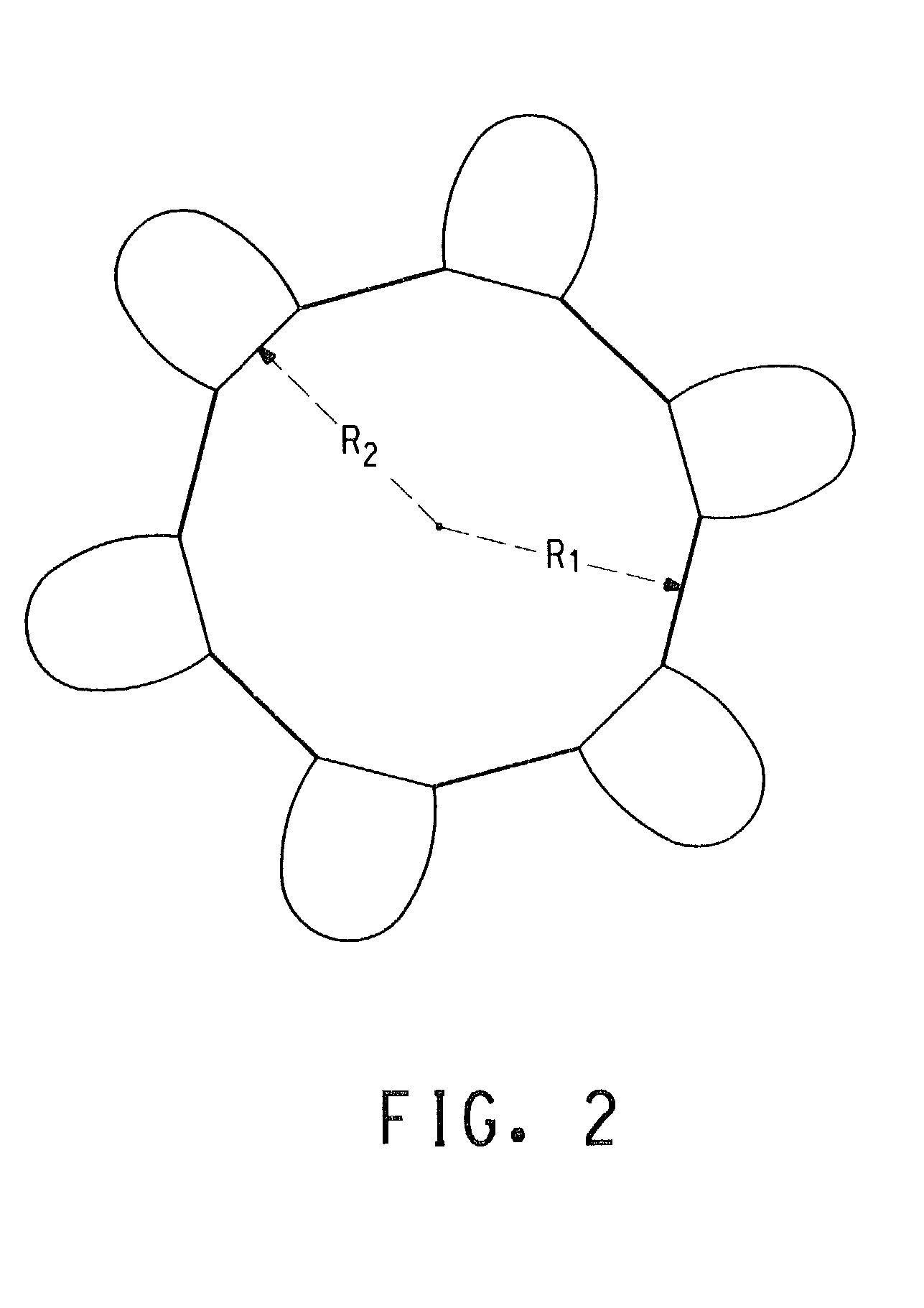Stretchable nonwoven web and method therefor
a non-woven, stretchable technology, applied in the direction of weaving, water-setting substance layered product, chemistry apparatus and processes, etc., can solve the problem that non-wovens formed using a high content of elastomeric polymer are generally expensiv
- Summary
- Abstract
- Description
- Claims
- Application Information
AI Technical Summary
Problems solved by technology
Method used
Image
Examples
example 1
[0138]Bicomponent multi-winged filaments having a substantially round elastomeric core and 5 hard polymer wings arranged symmetrically about the core were spun using the pre-coalescence spinneret orifice geometry shown in the FIG. 16. The capillary dimensions shown in the figure are given in Table 1 below (E and Eφ represent the diameters of a semi-circle forming the wing tip).
[0139]
TABLE 1Spinneret Capillary DimensionsDimensionA0.015in (0.038 cm)A′0.020in (0.051 cm)B0.0035in (0.0089 cm)C0.012in (0.30 cm)D72degreesE, Eφ0.0045in (0.0114 cm)
[0140]The elastomeric core polymer was Hytrel® 3078 copolyetherester resin (flexural modulus 28 MPa) available from DuPont. The “hard” polymer was a high density polyethylene (HDPE) resin available from Equistar Inc. (Cincinnati, Ohio) as H-5618 HDPE. The Hytrel® 3078 polymer was dried in a vacuum oven at a temperature of 105° C. to a moisture content of less than 50 ppm.
[0141]The two polymers were separately extruded and metered to a spin-pack ass...
examples 2-5
[0146]A mono-filament bicomponent yarn having an elastomeric core and five wings symmetrically arranged about the core with core penetration into the wings (see FIG. 6) was spun using a five-wing version of the spinneret geometry shown in FIGS. 13, 13A, 13B, and 13D and the process shown in FIG. 12 without steam relaxation. The ratio R1 / R2 (see FIG. 2) was between about 1.35 to 1.4.
[0147]The wing polymer was Camacari Nylon 6, VISCOSIDADE 3.14 IV available from DuPont Polimeros LTDA (Camacari, Brazil) having a reported relative viscosity of 55 and the core polymer was Pebax® 3533SN polyether block polyamide elastomer, supplied by Atofina Chemicals (Philadelphia, Pa.). The wing polymer contained 5% by weight of nylon 12 to promote cohesion to the core polymer. A 25 denier (28 dtex) per filament mono-filament was produced at a spinning speed of 420 meters per minute and a draw ratio of 3.5× and was wound up as a yarn package. A water-dispersed silicon finish was applied to the filament...
examples 6-7
[0152]These examples describe preparation of hand samples from bicomponent fibers comprising an elastomeric copolyetherester core and hard copolyetherester wings.
[0153]Bicomponent continuous filaments having a symmetrical six-wing cross-section substantially as shown in FIG. 2 were spun using an apparatus as illustrated in FIG. 12 from a pre-coalescence spinneret having 10 capillaries to form yarns having 10 filaments per yarn. The precoalescence spinneret pack was comprised of stacked plates shown as A through E in FIG. 13 with spinneret, distribution, and metering plates substantially as shown in FIGS. 13A-13C. The spinneret plate had ten orifices, each having six wings arranged symmetrically at 60 degrees, around a center of symmetry and were formed using a process as described in U.S. Pat. No. 5,168,143. As illustrated in FIG. 13A, each wing orifice was straight with a long axis centerline passing through the center of symmetry and had a length of 0.0233 inches from tip to the c...
PUM
| Property | Measurement | Unit |
|---|---|---|
| Flexural modulus | aaaaa | aaaaa |
| Flexural modulus | aaaaa | aaaaa |
| Flexural modulus | aaaaa | aaaaa |
Abstract
Description
Claims
Application Information
 Login to View More
Login to View More - R&D
- Intellectual Property
- Life Sciences
- Materials
- Tech Scout
- Unparalleled Data Quality
- Higher Quality Content
- 60% Fewer Hallucinations
Browse by: Latest US Patents, China's latest patents, Technical Efficacy Thesaurus, Application Domain, Technology Topic, Popular Technical Reports.
© 2025 PatSnap. All rights reserved.Legal|Privacy policy|Modern Slavery Act Transparency Statement|Sitemap|About US| Contact US: help@patsnap.com



